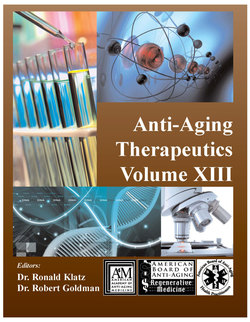Читать книгу Anti-Aging Therapeutics Volume XIII - A4M American Academy - Страница 28
На сайте Литреса книга снята с продажи.
Diet and Prostate Cancer
ОглавлениеA great deal of research has been published attempting to isolate dietary factors for cancer in general, and for PCa specifically. At best, this has yielded a limited picture and conflicting recommendations. When you step back and examine the diets and food supplies of regions where cancer rates are low, a different picture emerges. For example, when the PCa rates for Greece (pre-2006) are compared to United States rates, based upon autopsy examination of the prostate, you find that men between 50 and 59 years old in Greece have a rate of 5.2%, versus 30+% in the U.S. For men between 60 and 69 years old in Greece the rate is 13.8%, while the U.S. rate is 65+% – 4.7-times the Greek rate. This period was selected because at that time the Greek people still ate from a locally grown, heirloom food supply, unaltered in seed line and growing methods for hundreds of years (it has since changed to comply with European Union (EU) requirements and their health profile appears to be rapidly changing). This food supply represents a healthy variant of the Mediterranean diet.
In areas of Spain, where cancer rates are also extremely low, again the diet consists of locally grown heirloom foods. From this region we have a measure of the phytosterol content of the diet, which shows that average consumption of total phytosterols is about 400 mg per day, of which 67% is B-Sit. From here if we move to Germany, where cancer rates are approximately the same as those of the United States, again we find that the total phytosterol consumption is about 350 to 400 mg per day: however the B-Sit content is only in the 35-to-43% range.
One conclusion from this literature, especially when it is looked at in a broader context, is that it is not just the diet, but the nutritional composition of the food consumed in that diet, that makes a critical difference, and that B-Sit is essential for health in general, and our body’s anti-cancer mechanisms in particular.
Another way to look as this, is to look at the effects of high levels of dietary and circulating B-Sit. A partial list of the effects produced with high levels of B-Sit includes: normalizing cholesterol, a reduction in insulin resistance, support for normal weight control and fat metabolism, a reduction in asthma incidents, acting as an anti-inflammatory and an immune modulator, a reduction in cardiovascular disease and arteriolosclerosis, and reduced rates of lung, prostate, and other cancers.
